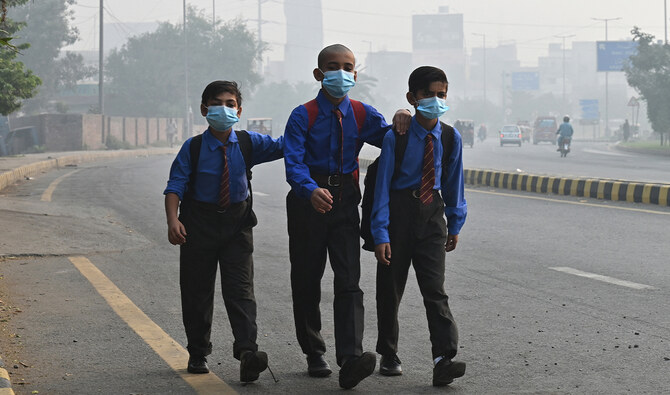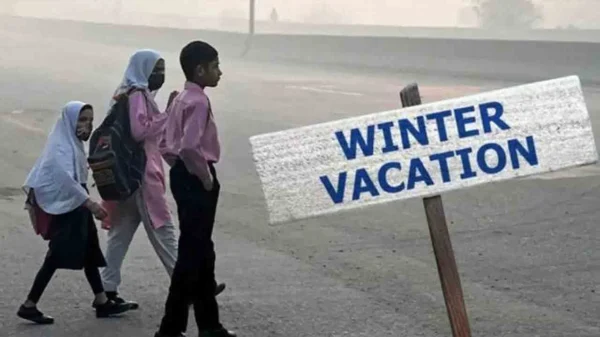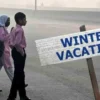Smog Crisis
The Punjab government has announced the closure of all primary schools in Lahore for one week due to the worsening smog crisis, affecting both public and private institutions. Senior Provincial Minister Marriyum Aurangzeb confirmed that classes from playgroup to grade five will remain suspended, as part of the government’s response to the hazardous air quality in the city.
The decision follows a previous adjustment to school hours, and officials plan to reassess the situation at the end of the week to determine if an extension of the closure is necessary.
The city, home to over 14 million people, has been blanketed by a thick layer of smog in recent days. This dangerous mixture of fog and pollutants, caused by low-grade diesel emissions, agricultural burning, and winter weather patterns, has led to air quality index (AQI) readings that far exceed safe levels.
On Saturday, Lahore’s AQI surpassed 1,000, well beyond the threshold of 300, which is considered “dangerous” by international standards. The Punjab government recorded similarly alarming levels on Sunday, describing the situation as “unprecedented.”
During a press conference, Aurangzeb attributed much of the smog to pollutants drifting across the border from India, particularly from crop residue burning in agricultural regions. She explained that strong winds carried this polluted air from Chandigarh into Lahore, causing AQI levels to spike.
At one point, readings near the Pakistan-India border reached as high as 1,900. Although the AQI briefly dropped when the winds subsided, it quickly surged again as wind patterns continued to blow pollutants towards Lahore.
Aurangzeb also highlighted ongoing efforts to mitigate the smog locally. She mentioned arrests of farmers for burning crop residues, urging them to use super seeders instead.
Additionally, the government has imposed restrictions on high-pollution vehicles, including banning two-stroke engine tuk-tuks and monitoring excessive smoke emissions with Safe City cameras. Green lockdowns, which limit the movement of polluting vehicles, have already proven successful in lowering pollution in certain areas, like the Shimla Hills region.
Despite these efforts, Aurangzeb warned that weather forecasts predict continued winds from India over the next week, which may maintain high pollution levels in Lahore. As a result, the government has advised residents to limit outdoor activities and has established smog counters in hospitals to track air quality.
The impact of smog on public health is severe, with the World Health Organization (WHO) warning that prolonged exposure to toxic air can lead to strokes, heart disease, lung cancer, and respiratory illnesses.
Children are particularly vulnerable to these risks due to their developing lungs and higher breathing rates relative to their body size. On Saturday, levels of PM2.5 – fine particulate matter that poses the most significant threat to health – were over 40 times the WHO’s recommended limit, with only a slight decrease recorded on Sunday.
In response to the health risks, the Punjab government has also implemented additional restrictions, including a ban on outdoor exercise for schoolchildren until January. Furthermore, half of the staff in government offices and private companies are now required to work from home starting Monday.
Pollution in Lahore is a long-standing issue, with the University of Chicago’s Energy Policy Institute estimating that it shortens the average life expectancy of residents by 7.5 years.
According to UNICEF, around 600 million children in South Asia are regularly exposed to dangerous levels of air pollution, with half of all childhood pneumonia deaths linked to poor air quality. The government’s current actions are a critical attempt to protect the health and well-being of Lahore’s most vulnerable residents during this smog emergency.
I am a dynamic professional, specializing in Peace and Conflict Studies, Conflict Management and Resolution, and International Relations. My expertise is particularly focused on South Asian Conflicts and the intricacies of the Indian Ocean and Asia Pacific Politics. With my skills as a Content Writer, I serve as a bridge between academia and the public, translating complex global issues into accessible narratives. My passion for fostering understanding and cooperation on the national and international stage drives me to make meaningful contributions to peace and global discourse.










